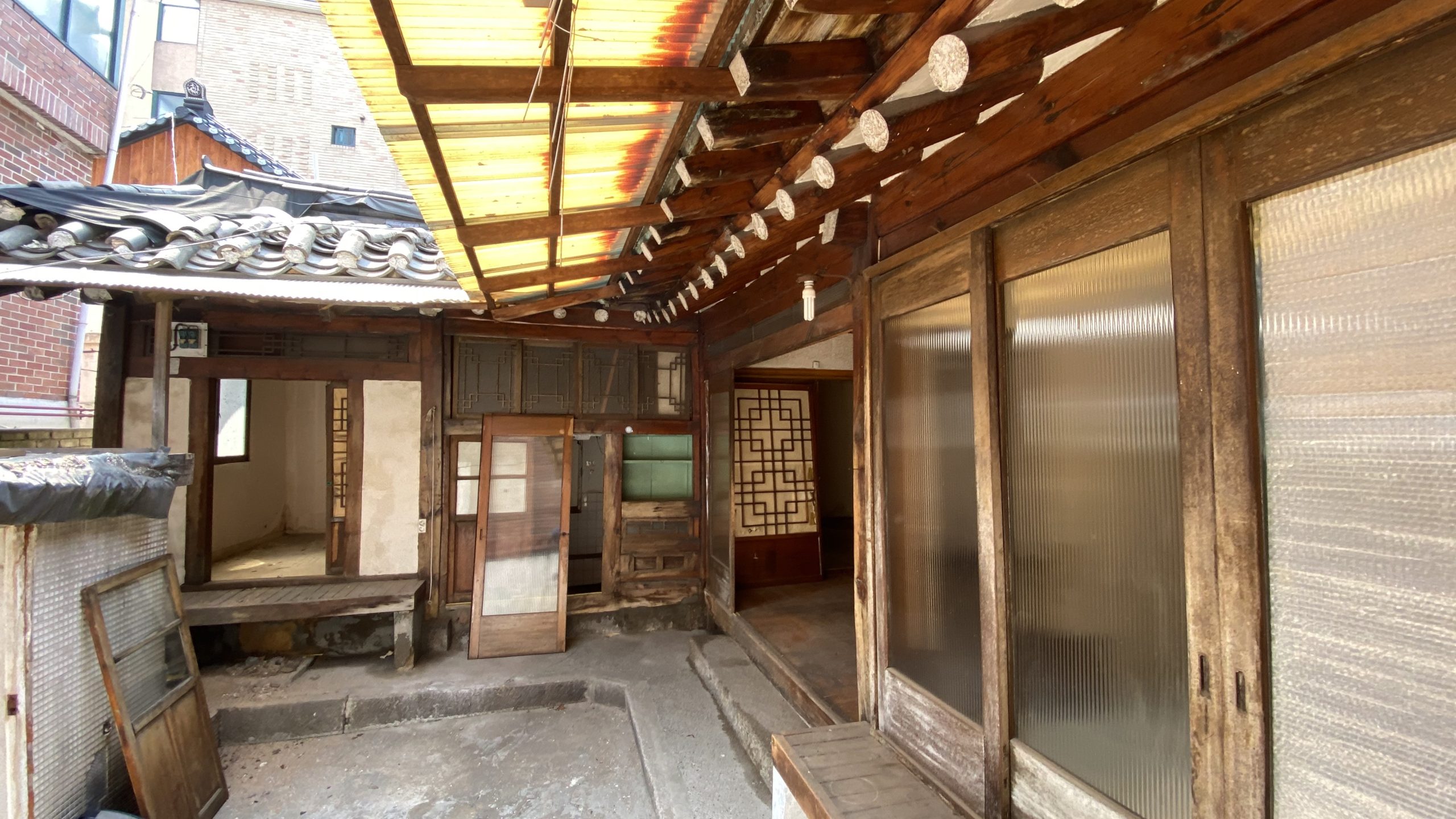Hidden Hanoks
Uncovering History in Korean Houses
Written and photographed by Ryan Berkebile.
Seoul has several neighborhoods dedicated to the preservation and celebration of traditional Korean houses called hanok (한옥). Tourists and hanok enthusiasts alike flock to the villages in Bukchon, Seochon, or even Namsangol to photograph or admire the architecture of these elegant houses and businesses. It is simply not a quiet residential zone anymore. Quite a few hanoks have been remodeled, gutting critical structural elements, and reconstructed into hip, minimalist coffee shops or high-end clothing boutiques. Immediately, the jaded part of my mind wants to condemn it all and blame it all on gentrification. Still, upon further reflection, I have softened my stance because of the Hidden Hanok Neighborhood. Seoul’s history is one of rapid expansion and change from the day Korea was opened up to outside influence in the late nineteenth century, and its evolution continues to this day. I consider it lucky and a blessing that these buildings made it through the chaos, instability, and violence that marks Korea’s past.
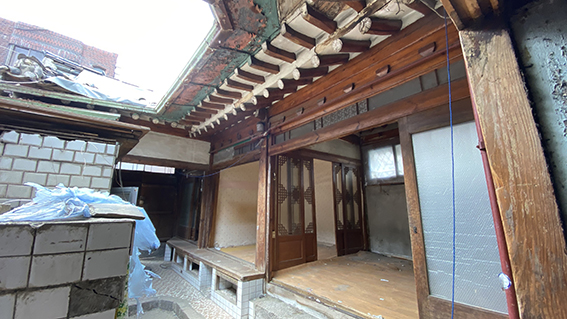
There are countless examples of empty, neglected hanoks throughout the country that face demolition in redevelopment zones in the twenty-first century. Looking at past issues of the Gwangju News, you will find that Isaiah Winters has written numerous articles about his explorations of hanoks in the City of Light. I have been lucky enough to tag along on some of these adventures. Most of the hanoks that we have explored date back to the 1960s and 1970s, an era of rapid industrialization and modernization commonly known as the “Miracle on the Han River.” Although deserted and worn down, these hanoks still possess grace and beauty that always shines through with a bit of re-imagination. Sometimes we come across discarded pictures and other memorabilia in a condemned house that enhances the narrative concocted in our minds.
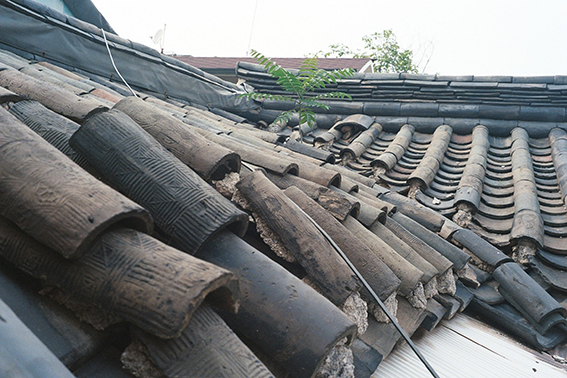
Recently, I discovered some older hanoks on a chance visit to a condemned neighborhood in Seoul. While an exploration of an abandoned area is a trip into the unknown, these specific hanoks especially caught me by surprise. It is rare to find vacant hanoks from the Japanese colonial era. A few were hiding in plain sight due to numerous renovations to their facade. The thought dawned on me that people have been modernizing hanoks from the beginning of the age of rapid growth. It is not so different from what is being done in hanok villages today. It is about survival and remaining relevant to contemporary tastes. Other hanoks were tucked behind 1980s-style brick apartments, obscured from casual glances. The hanoks here are not on display like the ones you find in the Bukcheon or Seochon hanok villages. For these reasons, I choose to call this place the “Hidden Hanok Neighborhood.” Keen eyes, patience, and diligence are required when searching this neighborhood for traditional houses. I stumbled upon two late 1930s-era hanoks that I shall pay tribute to here before they meet their demise.
I christen the first hanok the “Tatami Hanok.” A friend of mine did some digging and discovered the government first registered this house on June 30, 1938. For those who do not know, tatami is a rectangular mat made from straw and used for flooring in traditional Japanese rooms. In Japan, people measure the size of a room by the number of tatami mats in it. A small space, possibly a maid’s quarters at one time, was located above the kitchen. It had three tatami mats on the floor and one and a half mats affixed to the wall for some reason, possibly for padding or insulation. Finding tatami mats in an old Korean home is an incredibly odd and rare situation, yet it was not the first time I had encountered it while exploring. Another colonial-era house in Seoul that I had the luck and pleasure to explore before it got razed had a spacious ten-tatami attic.

The second hanok is called the “Great Japan Hanok.” Putting the words “great” and “Japan” next to each other might seem like a risky proposition in these socioeconomic times, but it is an apt description for what makes this house a remarkable find. My reliable friend again discovered that this house was registered in the government ledgers on August 22, 1936. While there was not any illuminating evidence inside, the distinguishing characteristics of the Great Japan Hanok are on the roof. The decorated-tile ends of hanok roofs are called mang-wa (망와). The adornments on mang-wa vary from house to house. I have seen Korea’s national flower, the mugunghwa (무궁화), and the symbol of sovereignty, the dragon, on the mang-wa of other hanoks. I pay more attention now to mang-wa after discovering the unique tiles of the Great Japan Hanok. Two Hinomaru Japanese flags crisscross each other, while underneath, the hanja (한자, Chinese characters) reads “大日本” (Great Japan). I did a double-take when I came across the first of many of these tiles, which was dangerous, as I had to stand on skinny ledges to get a better look at them.
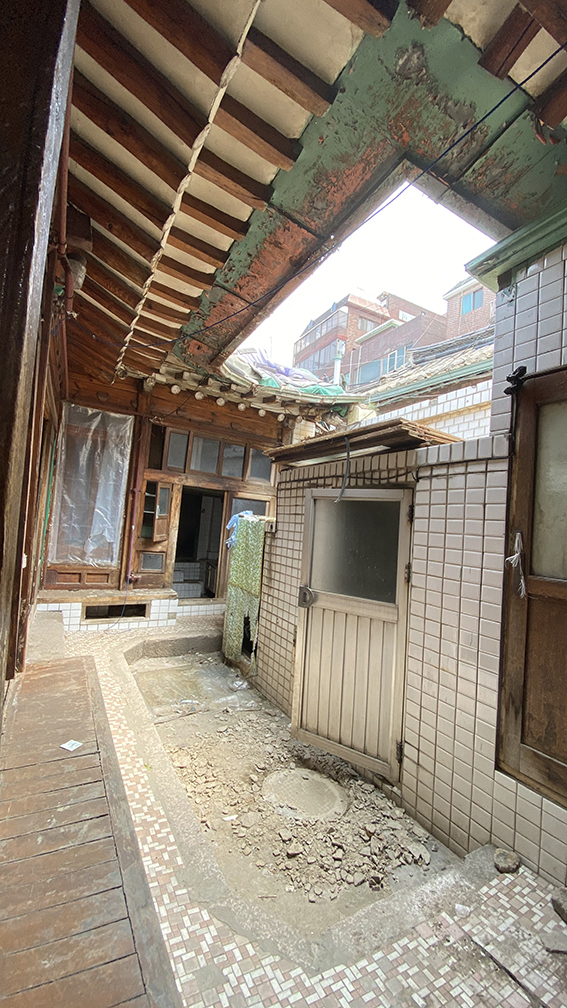
Unfortunately, the future of these buildings does not look so bright. The Tatami and Great Japan Hanoks have two strikes against them. First, they have the bad luck of being in the wrong place at the wrong time. Second, both houses and their discarded heirlooms represent a shameful time in Korean history. The tatami mats and Great Japan tiles are symbols of shame to some people who want to see these rare artifacts destroyed rather than showcased. My hope that is a preservationist will step up and find a way at the last possible moment to save these historically significant items, or even the houses themselves. It would be truly disappointing to see these buildings that have survived Japanese colonial rule, the Korean War, and a series of military dictatorships disappear in such an anticlimactic way.
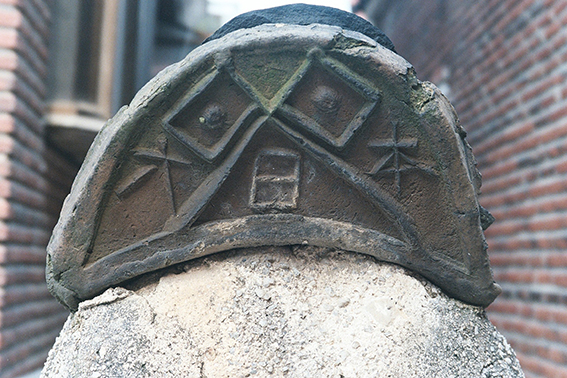
The Author
When Ryan Berkebile is not taking photos of abandoned neighborhoods, he likes to write blog posts for his website, Long Distance Runner. You can see what he has been up to at longdistancerunner.org and on Instagram: @l0ngdistancerunner and @naturaryan1600.





